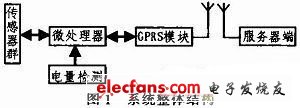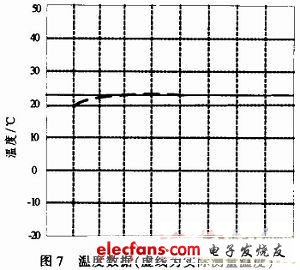The survival and development of wild animals maintain the balance and stability of the entire ecosystem and are closely related to the survival of human beings. The purpose of wildlife monitoring is to collect real-time wildlife-related data in real time, and use these data for statistics and analysis to provide important data support and decision-making information for wildlife research and protection. However, current wildlife monitoring has problems such as human-animal cross-infection and the difficulty of real-time dynamic multi-parameter monitoring. Most human infectious diseases originate from animals (such as SARS and AID S). Many wild animal diseases are contagious and can be transmitted to each other through various vectors. Especially when researchers are studying wild animals at close range infection. The habitats and activities of wild animals are vast and they are usually distributed in the dense forests of deep mountains. The living conditions are poor, and it is difficult for the monitoring personnel to realize the real-time monitoring of animals. Therefore, starting from practical applications, the author designed a wireless remote monitoring system with GPRS module as the core to detect the body temperature, exercise amount and environmental temperature of wild animals. After collecting the guidance data, the data processing module processes it and then accesses it through GPRS. Internet for remote transmission, control and management. Experiments show that the GPRS data transmission network is fully applicable in the wild animal environment monitoring system. 1 Overall design plan Install the front-end signal acquisition system on the animal, collect the required information through the sensor group and transfer it to the microprocessor. After the microprocessor integrates and packages all kinds of information, it will be sent to the GPRS module regularly, start the GPRS module to access the Internet, and finally the information Sent into the network monitoring center. Adopt modular design idea, its overall structure mainly includes front-end signal acquisition and conditioning module, control processing module for data analysis and management, low-battery alarm module and GPRS module for wireless transmission. Its structure is shown in Figure 1. The sensor group includes two temperature sensors, acceleration sensors, etc. The temperature sensor is used to measure the animal's body temperature and the external environment temperature. When the body temperature value is close to the external environment temperature value, the animal can be preliminarily determined to die, which can play a role in preventing poaching. Certain role. 2 Monitoring terminal hardware design 2. 1 power module Adopt 12C5A60S2 one-chip computer and SIM300 wireless communication module to form the data collection terminal. The external input voltage is 9 V. Since the operating voltage of the sensor and the single-chip microcomputer is 5 V, and the operating voltage of the SIM300 module is 4.2 V, this system needs to provide 5 V and 4.2 V. The 5 V power supply can be realized by the 7805 chip; and for the SIM300 module using 4.2 V power supply, the maximum output current of the power supply must reach 2 A when working, so the MIC29302 chip is used, and the circuit diagrams are shown in Figure 2 and Figure 3, respectively. 2.2 Wireless transmission module The GPRS wireless communication module adopts Simcom's SIM300GSM / GPRS dual frequency module. It mainly provides wireless interfaces for voice transmission, short message and data services. It is suitable for developing some GSM / GPRS wireless application products. At the same time, the SIM300 module integrates the TCP / IP protocol stack and provides users with extended TCP / IP AT commands, so that users can easily use the TCP / IP protocol to achieve smooth access to the GPRS network and the Internet network. 1) Communication circuit design SIM300 provides two standard RS232 serial interfaces, users can use AT commands to complete the operation of the module through the serial port. The serial port has 7 pins in total, including: data pins TXD and RXD, status pins RTS and CTS, and control pins DTR, DCD, RING. Serial port one can be used for data exchange services, sending faxes, GPRS services and sending AT commands. Serial port two includes only two Pins TXD and RXD must be enabled by the AT command "AT + UART" before using serial port 2. Serial port one and serial port two cannot be used at the same time. Considering the need to access the Internet through the module, all the serial port signal pins are used. When the module communicates with the main control module, level conversion is required. To start the SIM300 module, simply pull the IGT pin low. Show. 2) SIM card circuit design The SIM card and the SIN300 module are connected through a board-to-board connector. Currently, there are 6-pin and 8-pin connections. The 6-pin connector is used in this solution. It mainly includes the power line, data line, SIM card clock, reset line and status line of the SIM card. The power supply voltage of the SIM card is powered by the SIM300 module, which is automatically selected according to the SIM card module provided by the communication company. In the design, RST, I / O, CLK, VCC, and GND on the SIM card are connected to the corresponding pins of SIM300, VPP is floating, and the connection circuit diagram is shown in Figure 5. 2.3 System software design Write software on the above hardware and use C language programming. It mainly includes the initialization part, the sensor data collection part, the error correction, compression processing part and data transmission part of the received data. In the sending part, the single-chip microcomputer communicates with the sim300 module in the form of AT commands through the serial port, and the system uses TCP point-to-point connection. The overall program flow chart is shown in Figure 6. The system uses GPRS to transfer data and uses TCP to connect. Local settings are made through the server's IP address to initiate the connection. During the initialization process, two temperature sensors are preferentially started to measure the animal body temperature and the ambient temperature, so as to prevent the heating of the monitoring terminal from affecting the accurate value of the temperature measurement. In the process of data processing, the system compares the temperature data received by the processor with the temperature data obtained last time. If the absolute difference between the data exceeds 0.2 degrees Celsius, the previous data is discarded in order to make simple corrections to the temperature data to ensure the data accurate. 3 Experimental results and analysis Use the temperature sensor for body temperature measurement in this system to measure the room temperature. The measurement results are shown in Figure 7. It can be seen from Figure 7 that the temperature result does not display due to the sharp rise of the sensor temperature during the initial temperature measurement, and the amount of change is too fast. The measured temperature gradually stabilizes with time, which is basically consistent with the actual temperature. For long working hours, it can effectively prevent measurement errors and stabilize the measurement temperature. 4 Conclusion This system is mainly for collecting the parameters of wild animals living in the wild. The data collected by the sensor is sent to the microprocessor, and then connected to the Internet through the SIM300 wireless communication module to wirelessly transmit the data to achieve real-time monitoring of the physiological parameters of wild animals At the same time, the system reserves a port that can be used for later GPS or other function expansion. The comparison of the two temperature signals introduced in the system can also play a certain early warning role in protecting rare wild animals and preventing poaching. Using GPRS wireless communication, real-time and stable remote monitoring of the amount of exercise, body temperature and ambient temperature of wild animals saves a lot of manpower and material resources for the research and monitoring of wild animals, and is of great significance for the protection of wild animal resources. Double-sided PCBs are one of the most common kinds available. While single-sided PCBs have one conductive surface, double-sided PCBs have a conductive layer on each side. A dielectric layer is surrounded by circuit copper layers and solder mask on both sides. Vias allow manufacturers to create traces on both sides that route around each other and connect between layers. Manufacturers use double-sided PCBs for products that need a beginner to intermediate level of circuit complexity. This type of PCB doesn`t offer as much circuit complexity or density as multilayer PCBs, but they work as an affordable option in numerous applications Double-Sided PCB, Double-Sided PCB With Enig Via In Pad PCB, FR4 PCB With Matt Black Soldermask Storm Circuit Technology Ltd , https://www.stormpcb.com



